WALTON, Edward Arthur
Edward Arthur Walton was born at Glanderston House, Barr Head, Renfrewshire on 15 April 1860, son of Jackson Walton, a Manchester commission agent, and his wife Elizabeth Balfour née Nicholson and into an exceptionally talented family. Walton spent two winters studying art at Kunstakademle in Dusseldorf and then attended classes at Glasgow School of Art where he met James Guthrie (1859-1930) and in the summer of 1879 Walton, Guthrie and Joseph Crawhall (1861-1913) worked together at Rosneath on the Clyde. In 1878 Walton’s brother had married Judith Crawhall and a nucleus of the Glasgow School came together in 1879. In 1883, Walton joined Guthrie, at Cockburnspath, Berwickshire where Walton made progress painting in both oil and watercolour in the open air also making a series of watercolours in Helensburgh, Argyll & Bute depicting the prosperous suburb and its well-dressed people. These watercolours are amongst the finest of the Glasgow School, with their clarity of image and colour and strong decorative sense. Walton was also a master of oil technique using extensive underpainting to create subtle effects and in 1885 Walton began work on 'A Daydream in the open air at Cockburnspath', which was Walton’s last large Realist picture before turning towards Whistler’s more subjective approach. In 1889 he received official recognition, being elected an Associate of Royal Scottish Academy and full member in 1905 and he exhibited at the Royal Academy in London. He lived at 73 Cheyne Walk in Chelsea 1894-1904, a neighbour of Whistler (1834-1903) and Lavery (1856-1931), during his period in London, Walton often painted in Suffolk, making two holiday visits to Walberswick before taking a long-term lease on the Old Vicarage in the nearby village of Wenhaston, Suffolk. The Suffolk landscape was important to Walton, and he painted pastoral scenes in oil and watercolour, the latter often on buff paper, with marvellously inventive use of bodycolour and watercolour. In 1904 the Waltons' returned to Scotland settling in Edinburgh but he continued to travel, painting regularly in Suffolk and abroad. In 1907 he visited Algiers and Spain with Guthrie and in 1913 worked in Belgium and in September 1908 there was a commission from historian and biographer John Bury (1861-1921) for an oil of his house at 9 Park Lane, Southwold, Suffolk. It was to be a gift to Bury's wife, whose portrait he also painted. In 1914 Walton was elected President of the Royal Watercolour Society and during the First World War he discovered the Galloway landscape becoming a regular visitor to the area. Edward Arthur Walton died at Edinburgh on 18 March 1922, aged 62.
Royal Academy Exhibits
from 134 Bath Street, Glasgow
1883 394 November
967 Old Church, Winchelsea - watercolour
from 160 Bath Street, Glasgow
1884 355 Winter Pasture
1024 Autumn - watercolour
1034 Victoria Road, Helensburgh - watercolour
1066 A Pastoral - watercolour
1885 1342 The Grandfather's Garden - watercolour
from Over Swell Manor, Stow-on-the-Wold
1896 1043 Landscape: Morning - watercolour
1068 Viola - watercolour
1070 Dora - watercolour
1077 Romance - watercolour
from 37 Cheyne Walk, Chelsea
1897 1380 Little Round Panel - watercolour
the late E. A. Walton
1922 370 The Forge at the Cross Roads
Works by This Artist
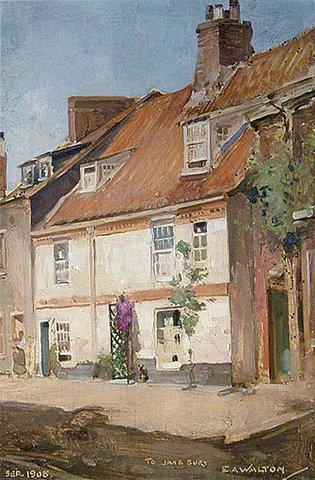
|
Number 9 Park Lane, Southwold, SuffolkOil on canvas
|
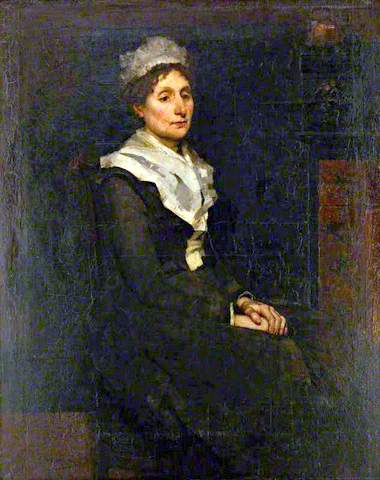
|
The Artist's Mother, Elizabeth Balfour Nicolson, Mrs Jackson WaltonOil on canvas
|
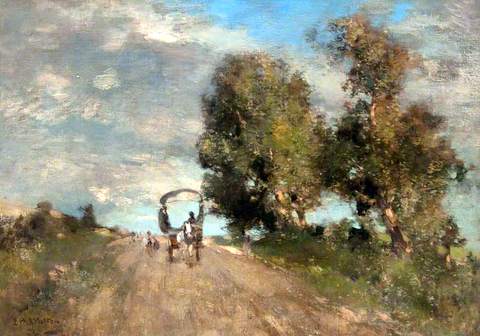
|
Summer Morning, SouthwoldOil on canvas
|
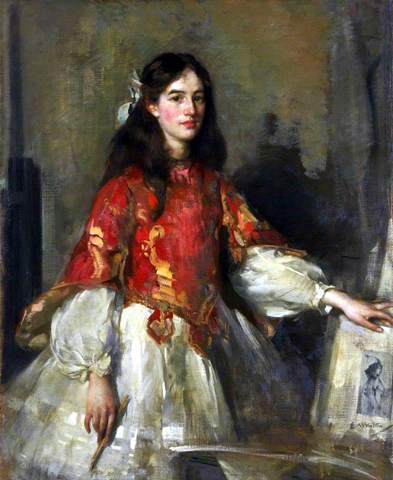
|
The Portfolio - Cecile Walton (1892–1956)Oil on canvas
|
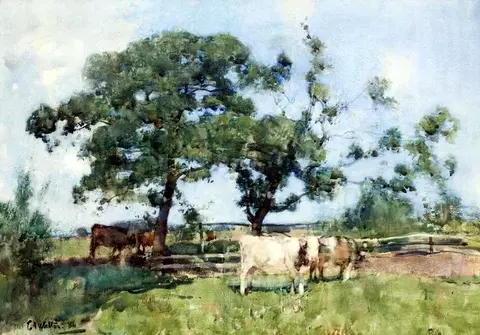
|
PastoralWatercolour
|